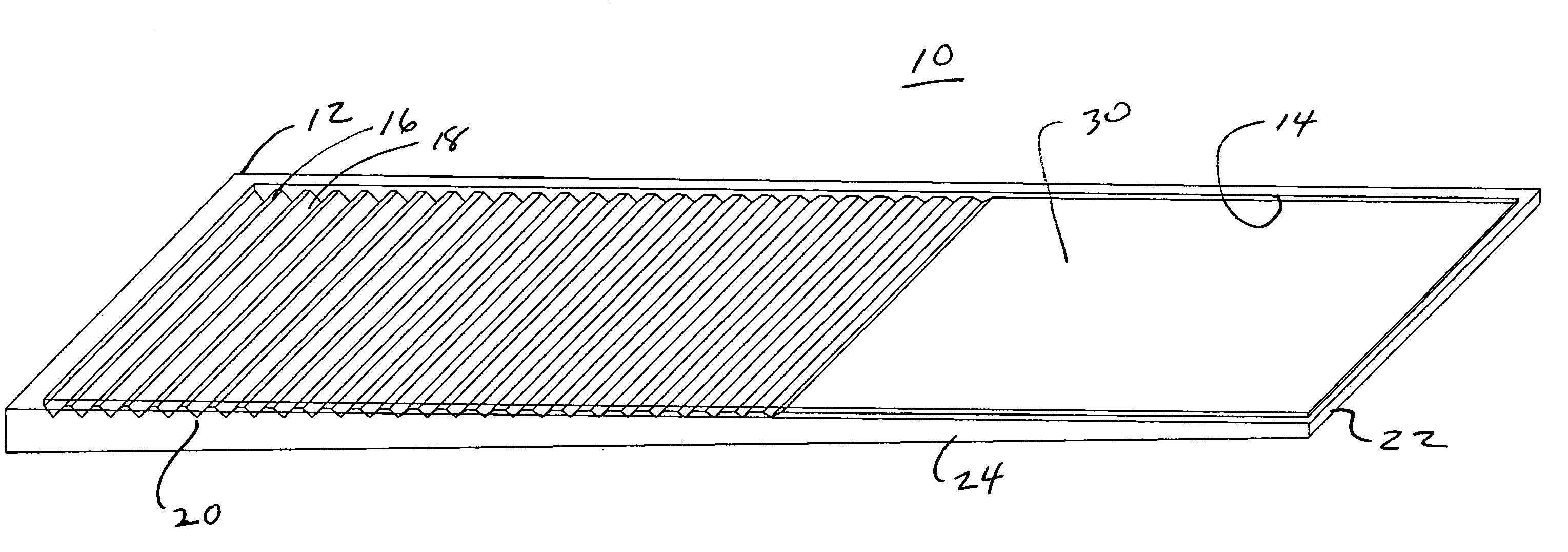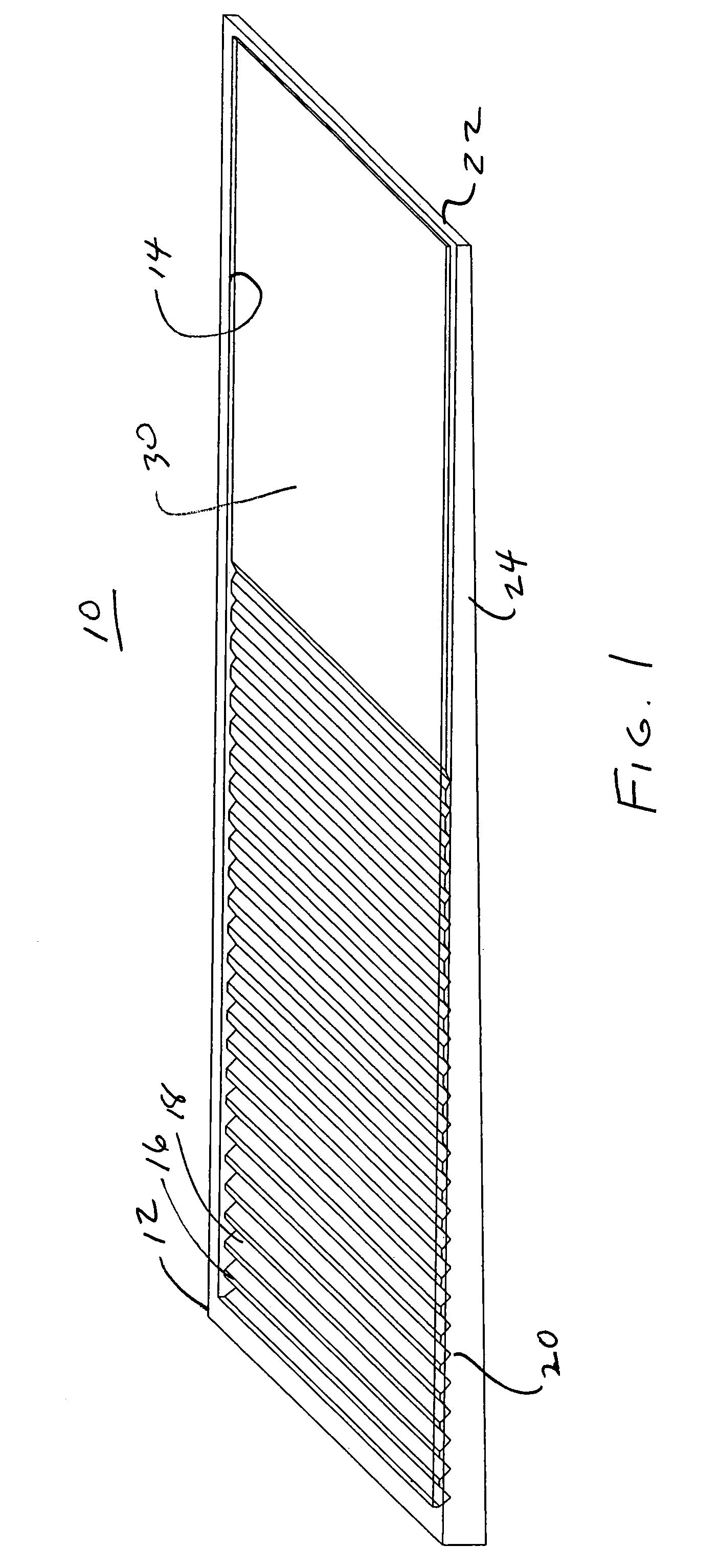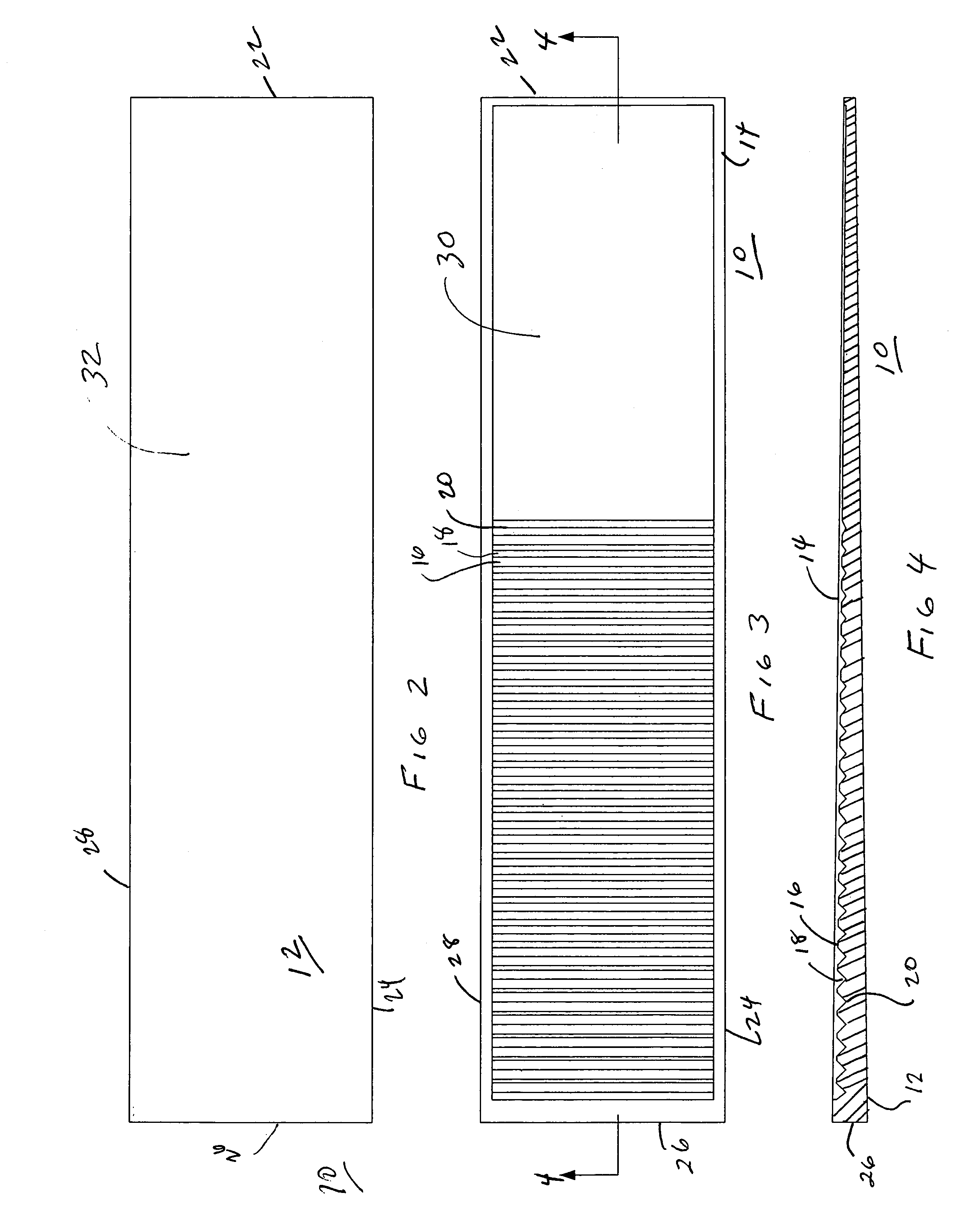Shim
a technology of cellulose fiber filler and shim, which is applied in the direction of identification means, instruments, seals, etc., can solve the problems of high cost, low production rate, and high cost, and achieve the effect of reducing the impact strength of the shim, increasing the brittleness of the shim, and facilitating and accelerating the breakage of the shim
- Summary
- Abstract
- Description
- Claims
- Application Information
AI Technical Summary
Benefits of technology
Problems solved by technology
Method used
Image
Examples
Embodiment Construction
[0022]The present invention is directed to improved, non-wood shims comprising polymers and natural fibers such as cellulose fiber originating from wet processed cellulose-based waste source materials. Turning to FIGS. 1–4, a shim 10 in accordance with the present invention, which may vary in length, width, and thickness, is shown to have a generally wedge shaped body 12 that tapers along its longitudinal axis from a thick end 26 to a thin end 22. The body 12 comprises a top face 30 and a bottom face 32 having generally rectangularly shaped profiles defined by parallely disposed side walls 24 and 28 and end walls 26 and 22. The top face 30 includes a series of ridges 16 and grooves 18 formed in the body 12. The ridges 16 and grooves 18 substantially traverse the width of the face 30 and extend from a point adjacent the thick end 26 to a point generally beyond the longitudinal mid-point of the face 30. The base of the grooves 18 preferably form break lines 20 which are evenly spaced ...
PUM
| Property | Measurement | Unit |
|---|---|---|
| aspect ratio | aaaaa | aaaaa |
| diameter | aaaaa | aaaaa |
| density | aaaaa | aaaaa |
Abstract
Description
Claims
Application Information
 Login to View More
Login to View More - R&D
- Intellectual Property
- Life Sciences
- Materials
- Tech Scout
- Unparalleled Data Quality
- Higher Quality Content
- 60% Fewer Hallucinations
Browse by: Latest US Patents, China's latest patents, Technical Efficacy Thesaurus, Application Domain, Technology Topic, Popular Technical Reports.
© 2025 PatSnap. All rights reserved.Legal|Privacy policy|Modern Slavery Act Transparency Statement|Sitemap|About US| Contact US: help@patsnap.com



